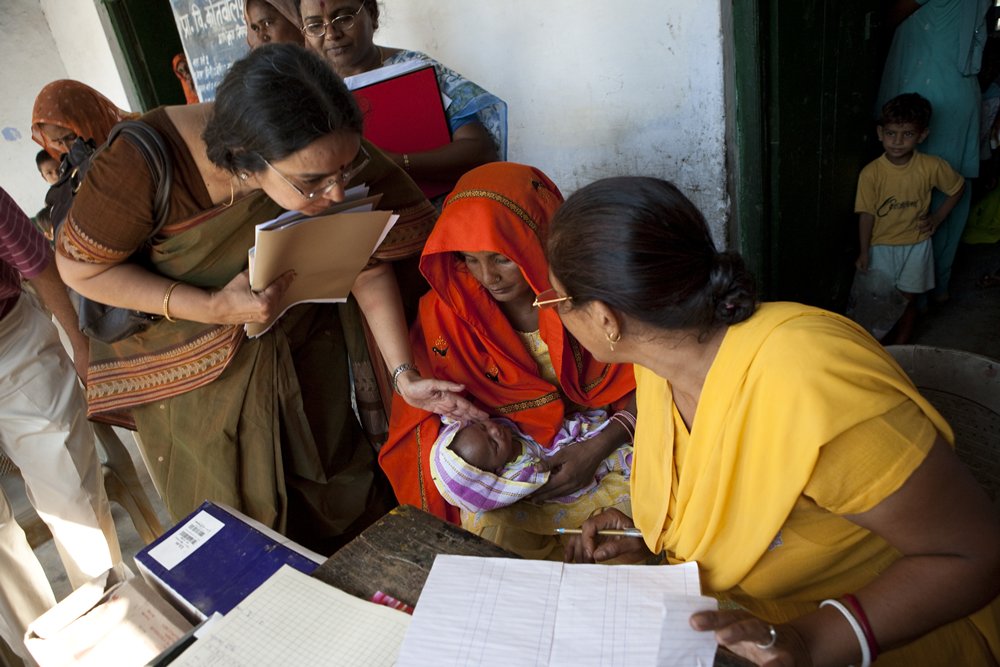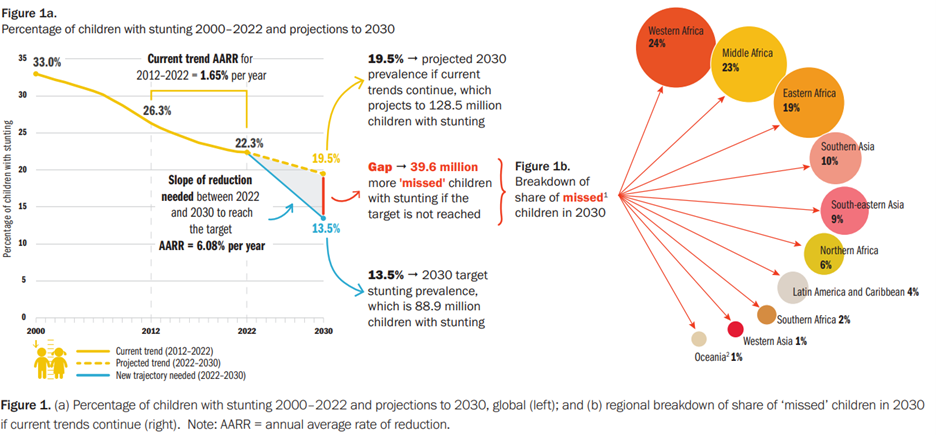Unpacking the Joint Child Malnutrition Estimates 2023 Edition

On May 18, 2023, UNICEF, the World Health Organization (WHO), and the World Bank Group released the Joint Child Malnutrition Estimates, which are published every other year. The new report examines progress to reach the 2025 World Health Assembly (WHA) global nutrition targets and Sustainable Development Goal (SDG) target 2.2 to end all forms of malnutrition. Specifically, the 2030 target is to reduce the number of children under 5 who are stunted by 50% and to reduce and maintain childhood wasting to less than 3%. Given the crises that low- and middle-income countries are experiencing, including conflict, disasters from climate change like severe droughts or flooding, and lasting impacts from the COVID-19 pandemic, it is not surprising, but still alarming, to see that tens of millions of children are affected by stunting and wasting:
- Stunting impacted 148.1 million children under 5 globally in 2022, or 22.3%.
- Wasting threatened the lives of 45 million children under 5 globally in 2022, or 6.8%.
Unfortunately, at the midpoint of the SDG period, the stunting target will not be met if the current trajectory of progress continues. The assessment of progress is not even possible for about one quarter of countries as only about one third of all countries are ‘on track’ to halve the number of children affected by stunting by 2030. Similar to stalled levels on stunting but more severe, an assessment of progress towards the wasting target is not possible for almost half of the countries.
The disparities of stunting and wasting and lack of progress lies predominantly in Africa and Southern Asia. In 2022, more than half of all children under 5 affected by stunting lived in Asia and two out of five lived in Africa. Additionally, 70% of all children under 5 affected by wasting lived in Asia and more than one quarter lived in Africa. If the current trajectory continues, an estimated 128.5 million children will be stunted in 2030, with about half of those living in Western and Middle Africa.
Globally, the annual average rate of reduction (AARR) for stunting based on the current trend from 2012 to 2022 is only 1.65 percent per year. But an AARR of 6.08 is required from now to 2030 to achieve the global target of reducing the number of children with stunting to 88.9 million. This rate of reduction is almost four-fold higher than what has been achieved in the last decade.
As countries move further away from the targets, and investments in critical nutrition interventions continue to be limited or reduced, the child malnutrition targets will become more challenging to achieve. Work must now be accelerated to catch up to the lack of progress which in turn is more costly. To compound this issue, the report also highlighted the dire need for addressing reporting and data gaps in countries and regions to measure and indicate progress on child malnutrition.
The report underscores the importance of reminding decisionmakers, like legislators and policymakers, and program implementers that all forms of malnutrition are preventable and that it is not too late to get countries and regions on track to meet these critical targets. Nutrition interventions are relatively inexpensive to implement and have an extremely high return on investment (ROI), with every $1 invested yielding up to $35 in economic returns. As malnutrition costs the world $3.5 trillion in lost productivity and healthcare costs each year, smart investments in global nutrition now would support billions of children to reach their full potential and help end the cycle of poverty and malnutrition once and for all. By ensuring all children and families have access to nutritious foods and essential health and nutrition services through proven nutrition interventions, substantial progress can be made to reduce and prevent stunting and wasting.

https://data.unicef.org/resources/jme-re 1
